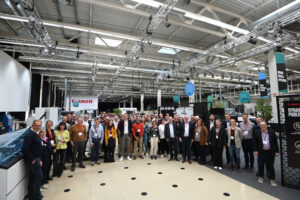There are as many reasons for the emergence of legacy software as there are excuses for not replacing old applications. IT service provider Avision shows why modernizing applications is so important and prevents problems later on.
Software developers sometimes establish a close connection with their projects, which they accompany from the ground up. It goes without saying that these applications are looked after and maintained – including regular updates and refactoring. However, the situation is quite different with the still widespread legacy applications that are still running in the background in many companies. There are many reasons for this: original developers have left the company, no one feels responsible or there is simply a lack of courage to modernize the long untouched code. The IT service provider Avision provides tips to ensure that even the dustiest applications no longer pose major problems.
Taking small steps
Modernizing entire legacy applications in one fell swoop seems insurmountable. It is better to take small, sensible steps and avoid the need to completely modernize an application in the short term.
Focus on components
The first priority for modernization measures should be individual components for which, for example, licenses or support have expired. It is also important to update the technologies and dependencies used. If neglected, this can lead to serious problems, as the security gap in the widespread Java library Log4j has impressively demonstrated.
Create routines
The continuous modernization of legacy software leads to new working methods. Thanks to these routines and experiences, the courage of developers to replace old applications and deal with legacy code is increasing.
Thinking about the future
IT departments should not only modernize code when it is urgently needed. Replacement should be planned in good time, otherwise there is a risk of serious problems. If, for example, the gap between two versions is too long, underlying technologies may no longer be compatible and the costs will multiply.
“Replacing legacy software is about having the courage to take a risk – but this courage often only increases as the need arises,” explains Nadine Riederer, CEO of Avision. “Companies should not let it get that far and incorporate the modernization of applications into their daily business right from the start. In this way, they can identify and eliminate problems at an early stage.”
This press release can also be found at www.pr-com.de/de/avision
Press contact
Avision GmbH
Christina Karl
Marketing
Bajuwarenring 14
D-82041 Oberhaching
Tel. +49-89-623037-967
christina.karl@avision-it.de
PR-COM GmbH
Melissa Gemmrich
Sendlinger-Tor-Platz 6
D-80336 München
Tel. +49-89-59997-759
melissa.gemmrich@pr-com.de



